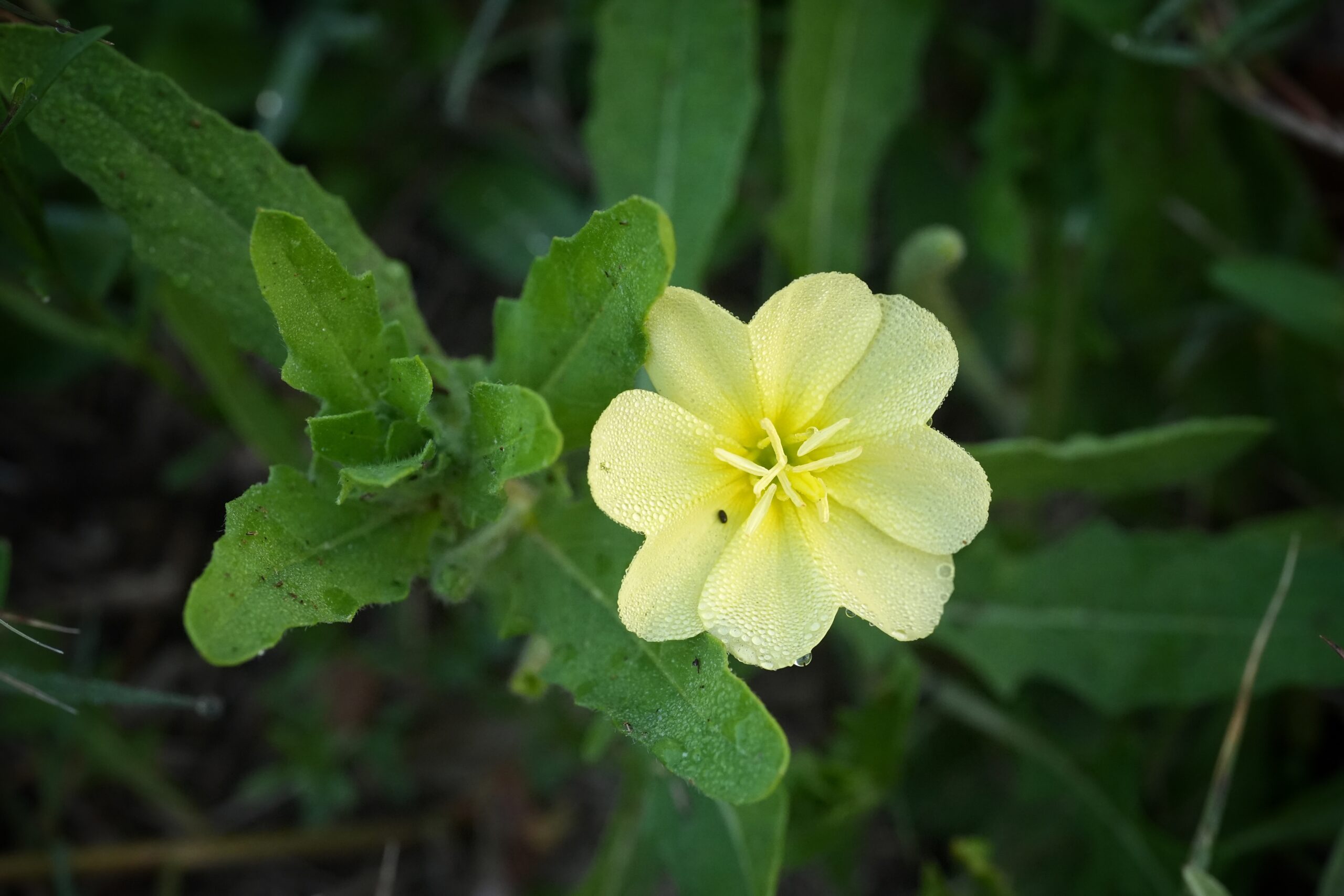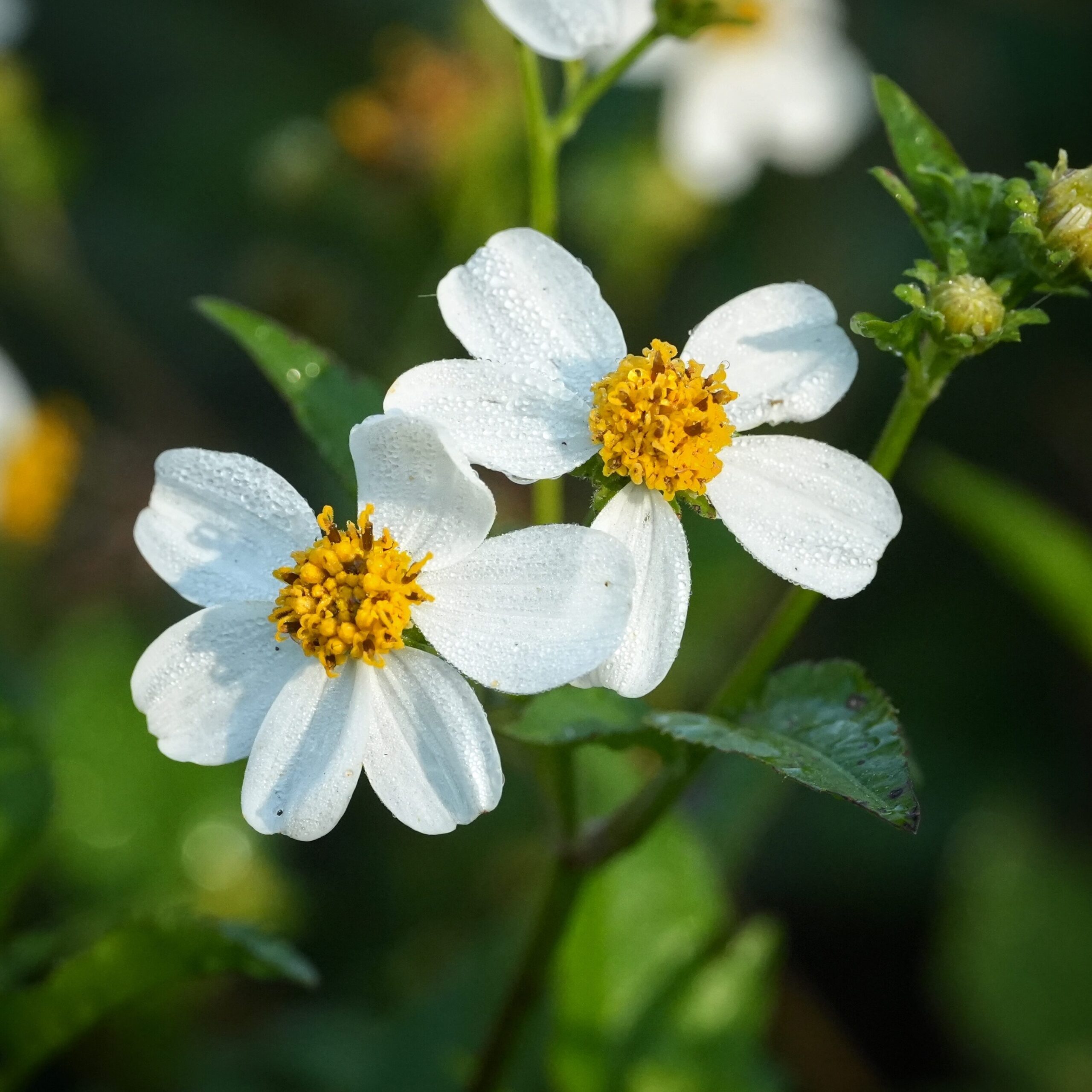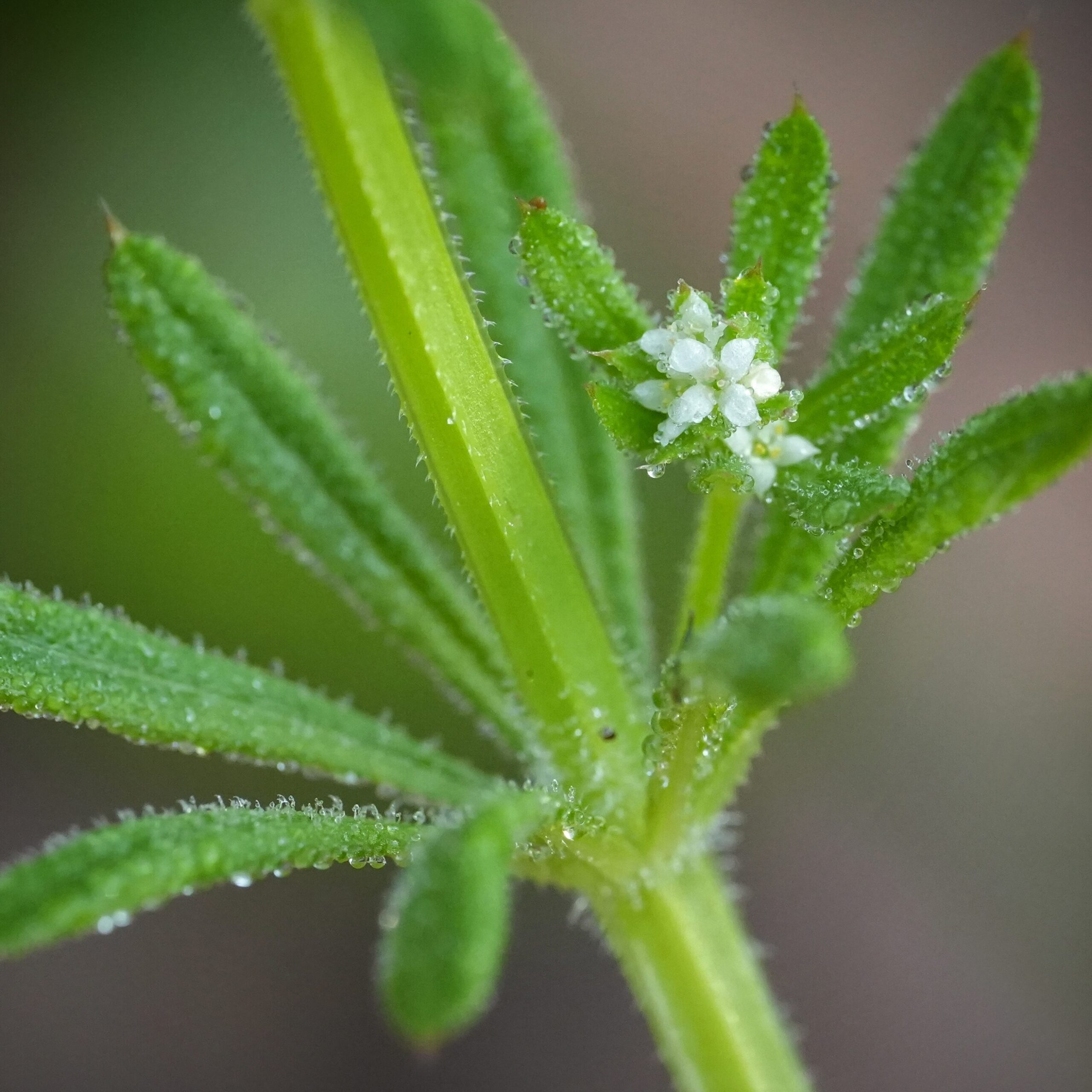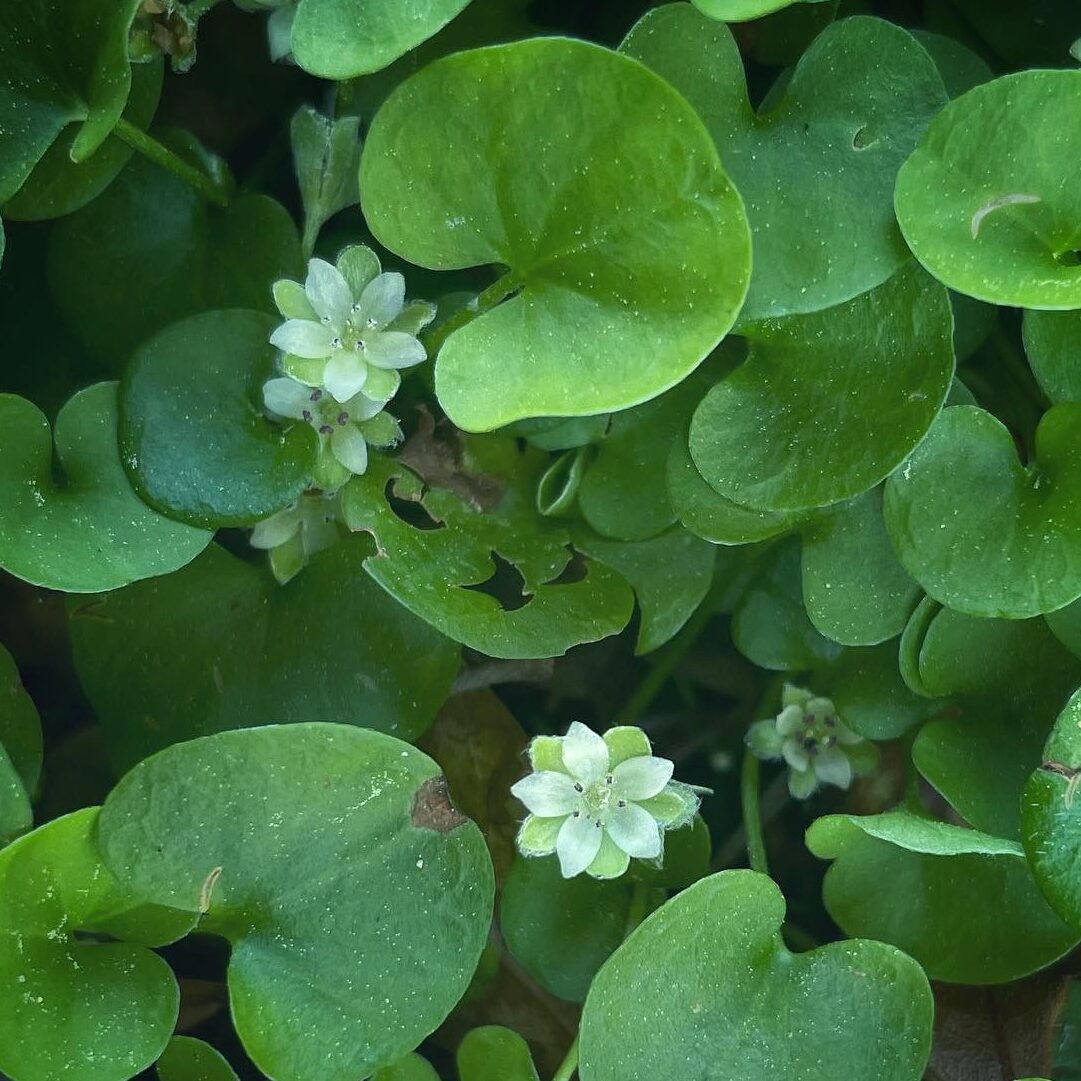Spring “weeds” are for the bees!
Pictured above: Cutleaf eveningprimrose (Oenothera laciniata) by Emily Bell
Springtime in Florida’s forests and flatwoods is bright with blooms from native plum and cherry trees (Prunus spp.), Azaleas (Rhododendron spp.), Pawpaws (Asimina spp.), Lupines (Lupinus spp.) and so much more! As these natural areas come to life in late February and March, so to do our urban landscapes, often to the dismay of those curating a manicured green lawn – cue the dreaded “weeds”! Blossoming plant volunteers can also create confusion for native plant gardeners unsure of what to keep and what to pull.
Early spring wildflowers are a critical food resource for hungry pollinators as they begin hatching, pupating or just waking up from a winter slumber, but these resources can be hard to come by in the urban environment. The national No Mow May initiative was created to encourage people to let early wildflowers bloom across their landscapes before beginning seasonal mowing. Here in Florida, however, where spring comes early, No Mow March is more appropriate. So before you get to work mowing or weeding, let’s take a look at some of the most common lawn “weeds” (both native and non-native) and learn a little more about them!
Common native spring wildflowers in urban areas
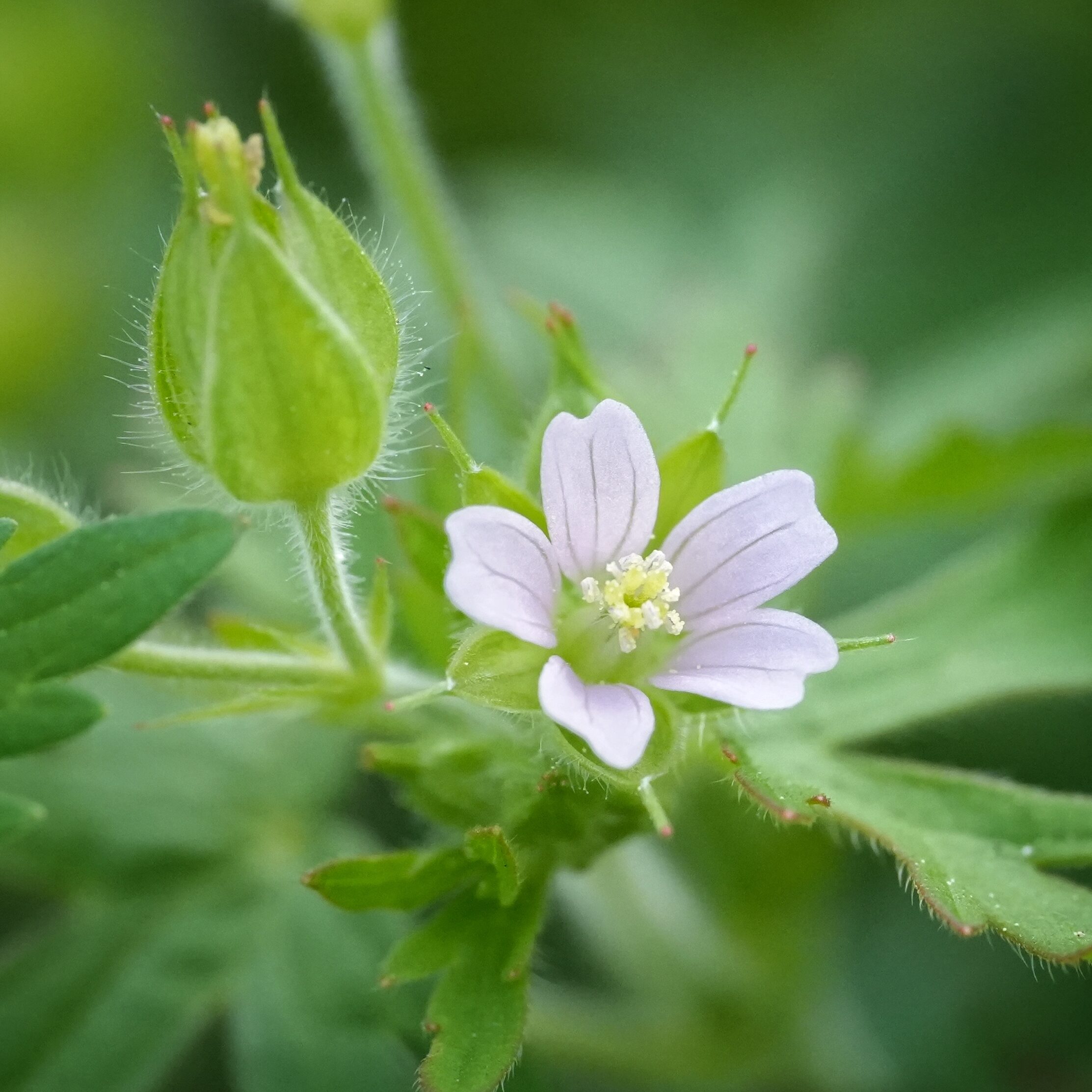
Carolina cranesbill
Geranium carolinianum
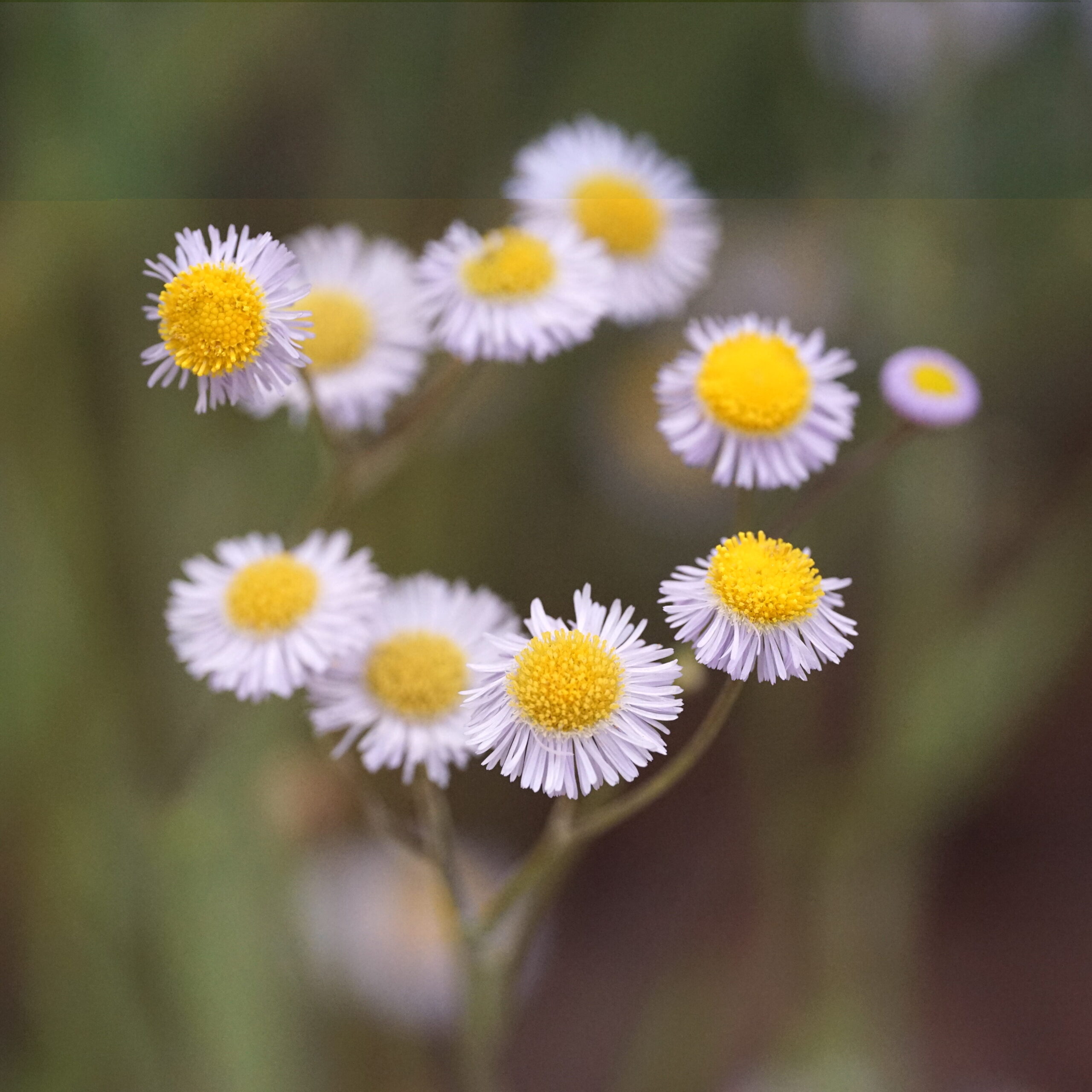
Oakleaf fleabane
Erigeron quercifolius
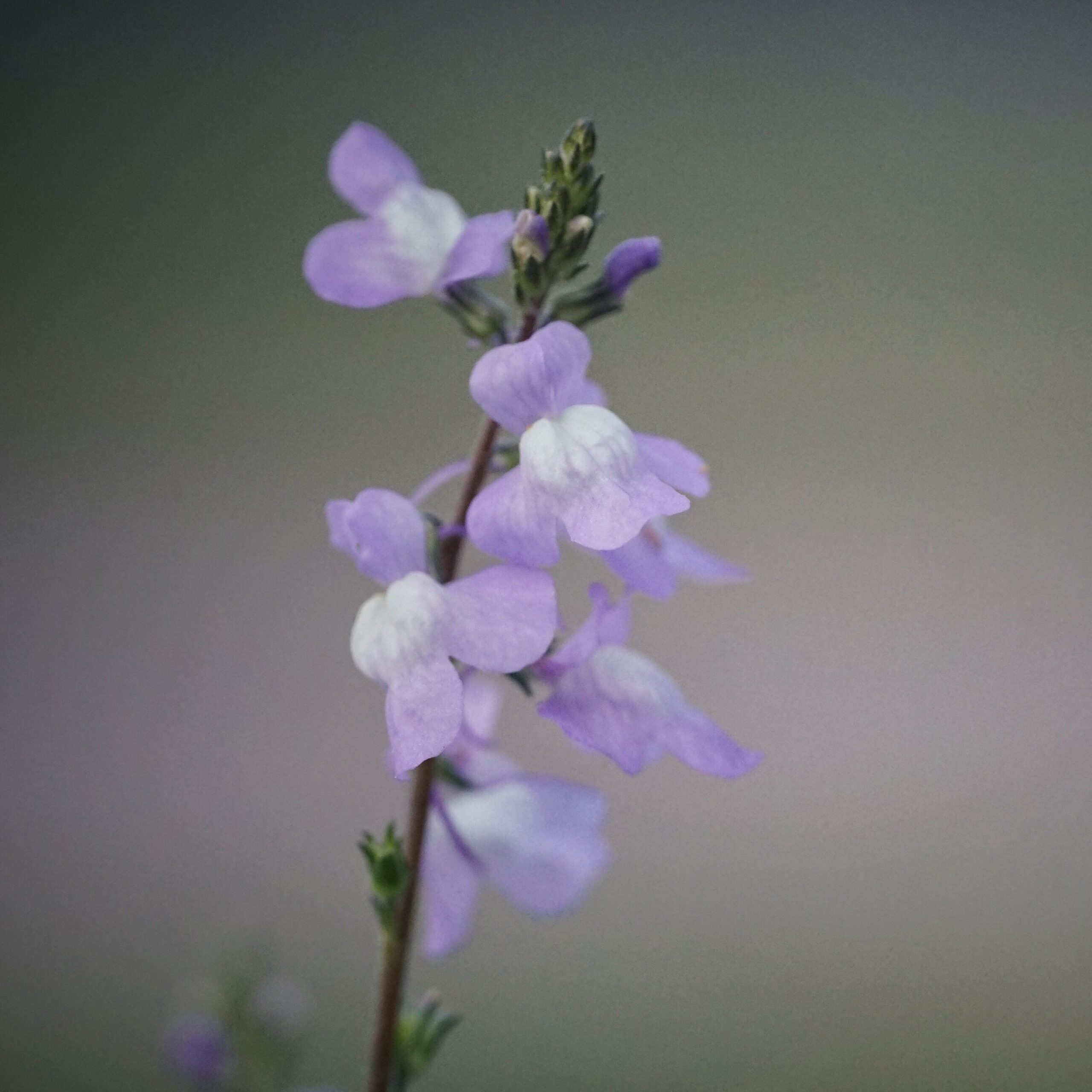
Toadflax
Linaria canadensis
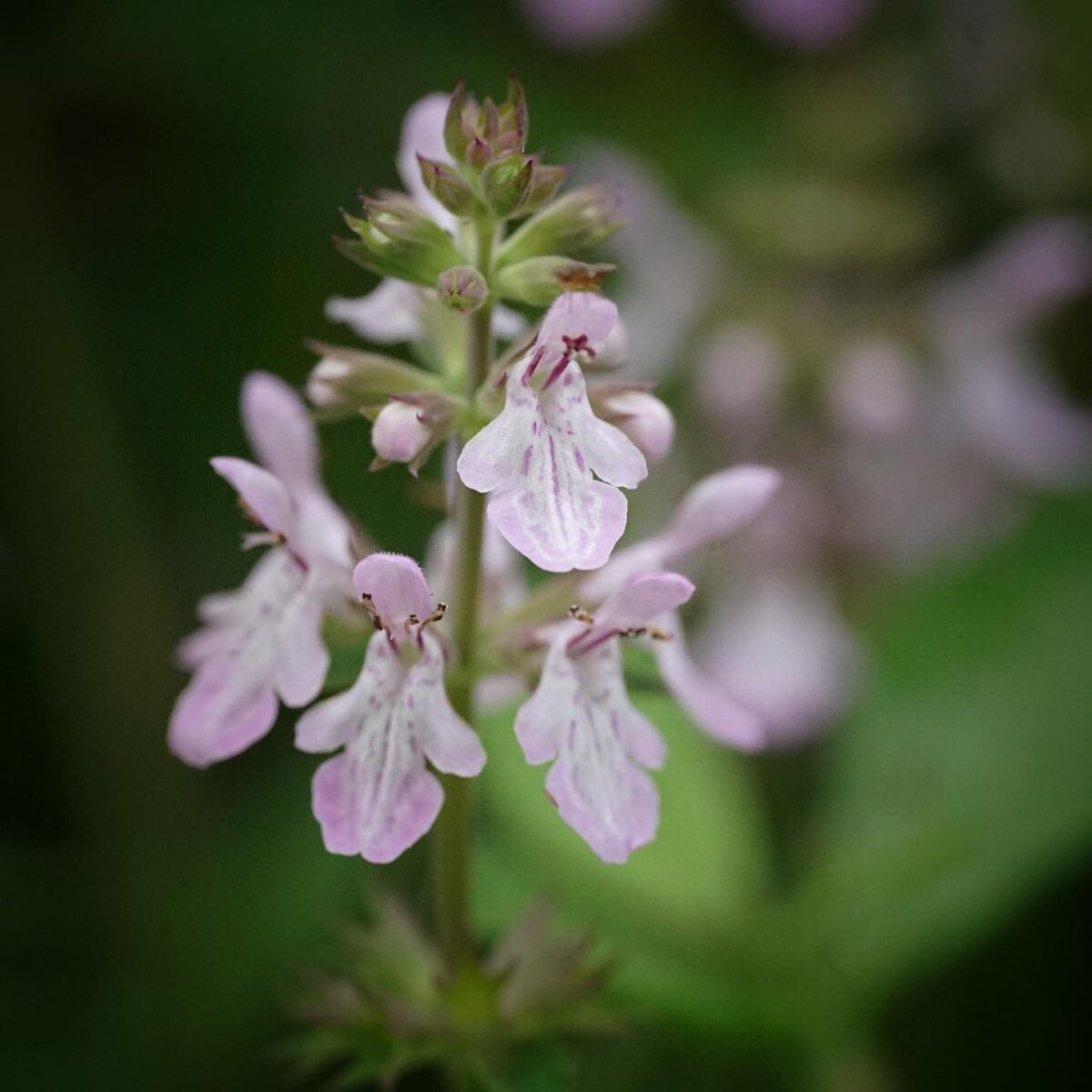
Florida betony
Stachys floridana
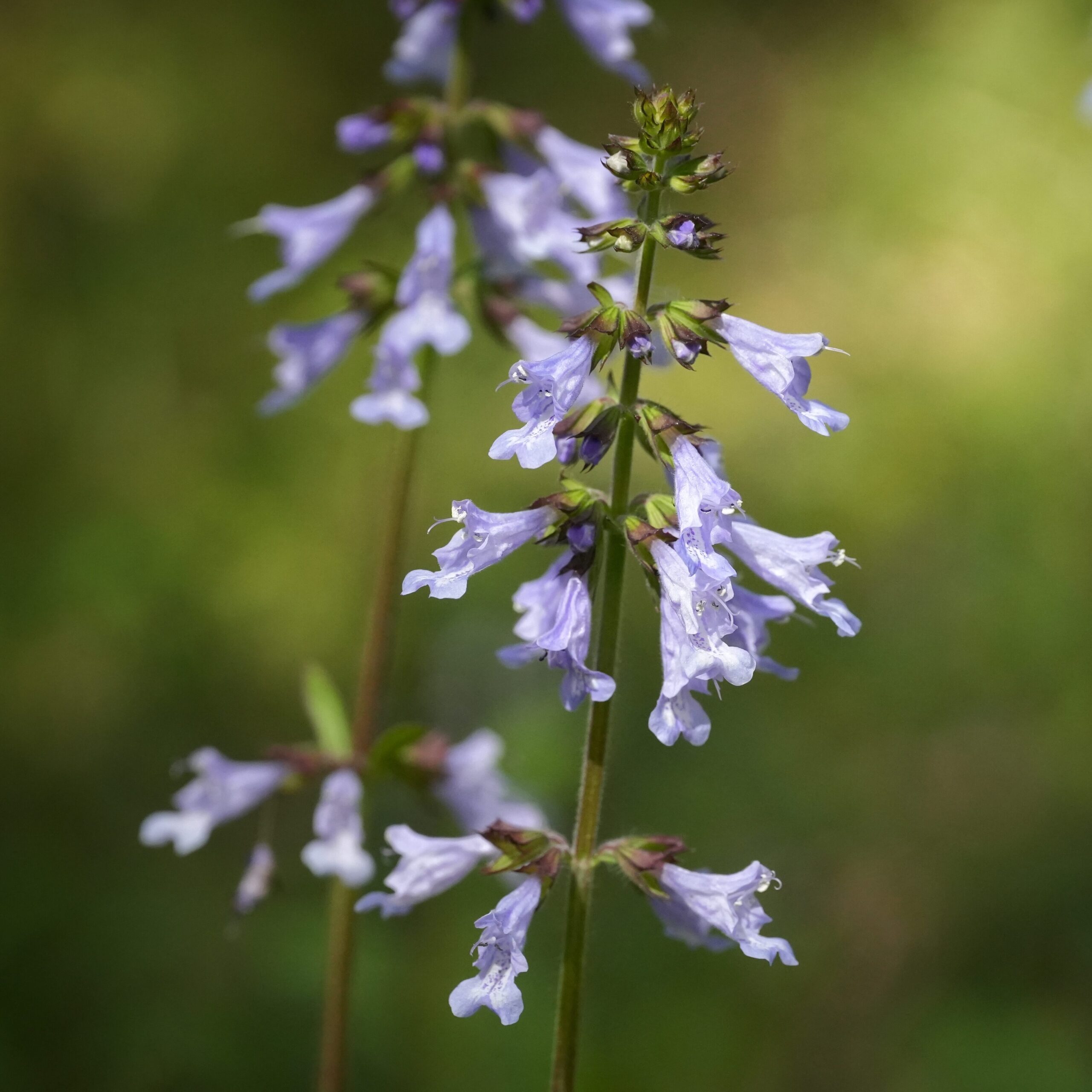
Lyreleaf sage
Salvia lyrata
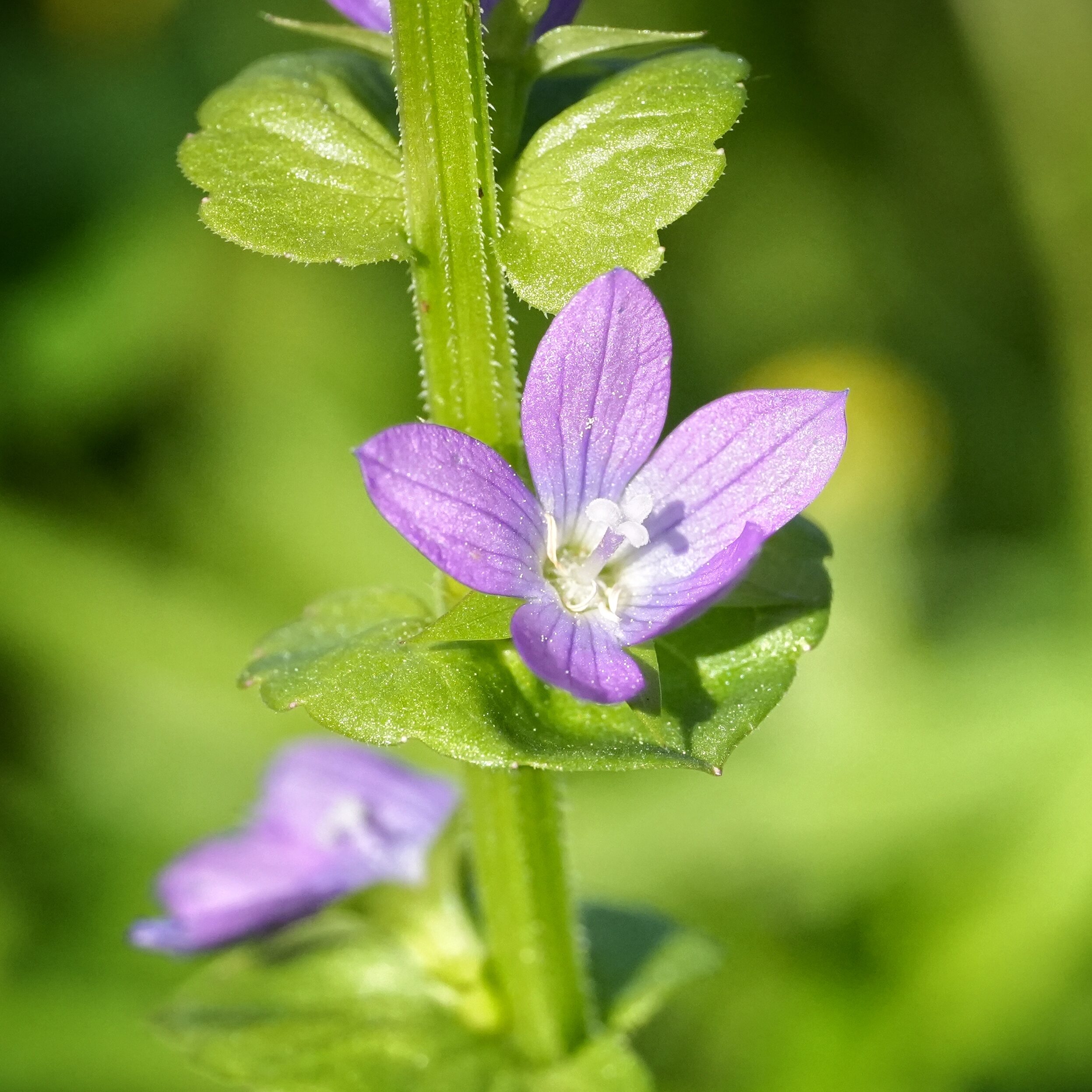
Clasping Venus’ looking-glass
Triodanis perfoliata
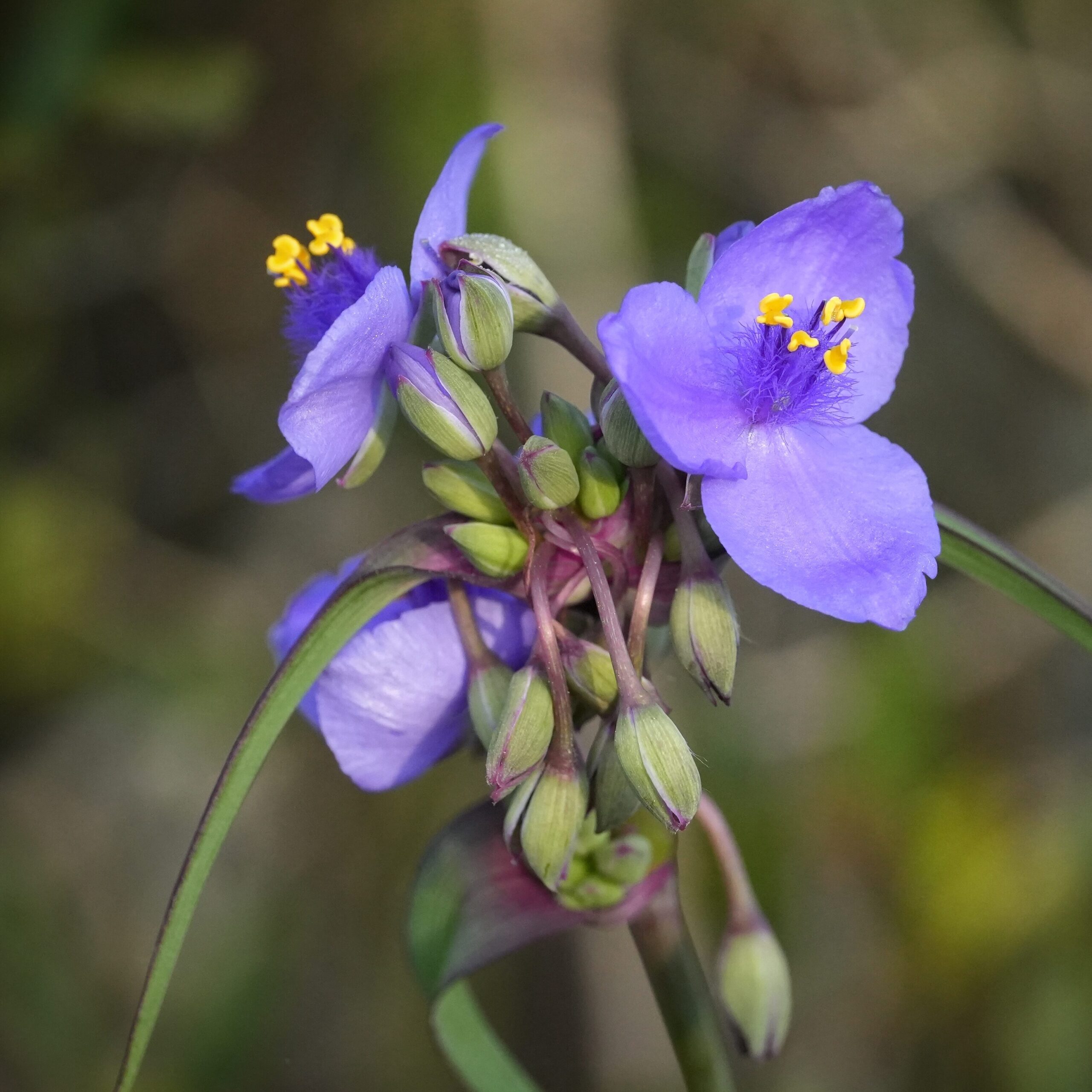
Spiderwort
Tradescantia ohiensis
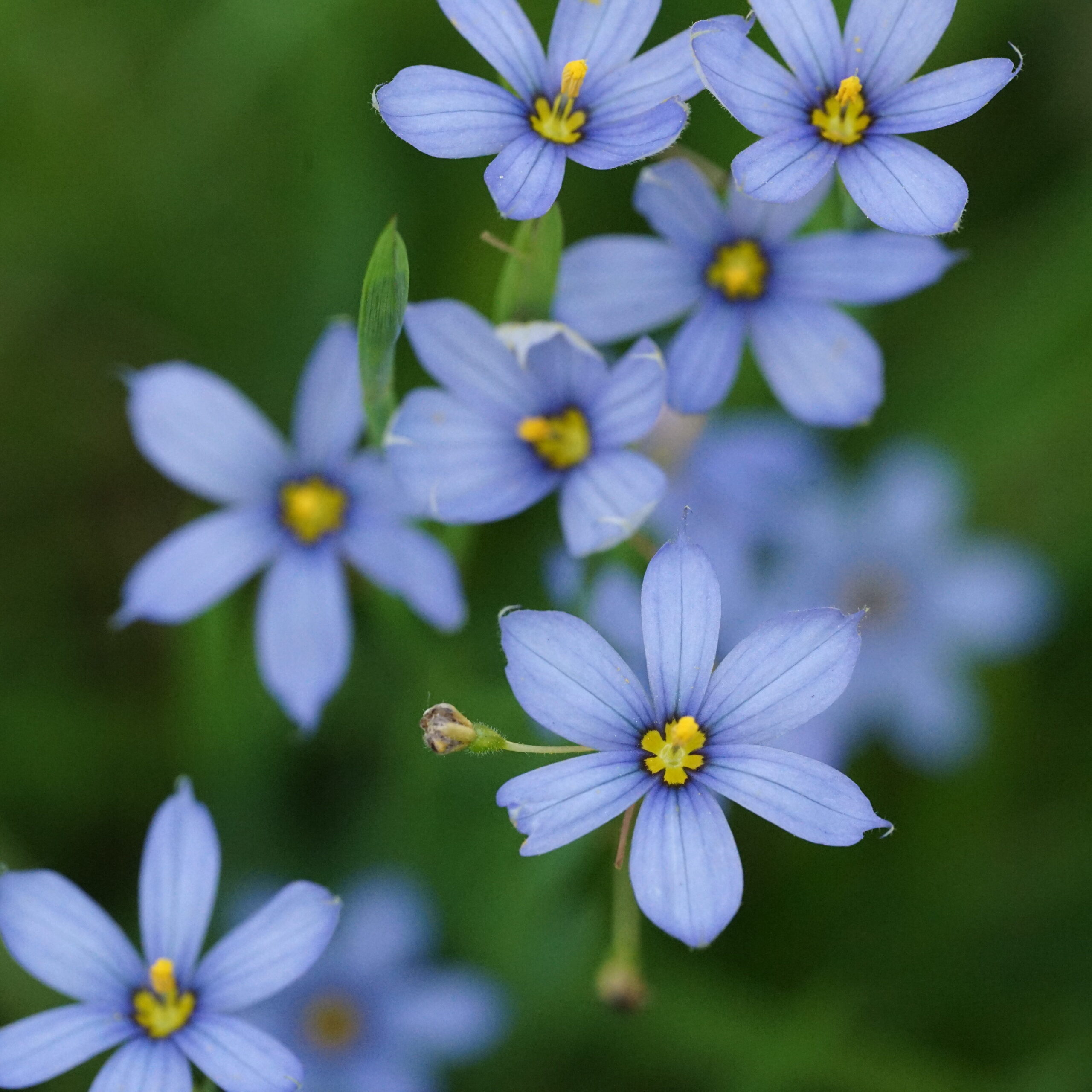
Blue-eyed grass
Sisyrinchium angustifolium
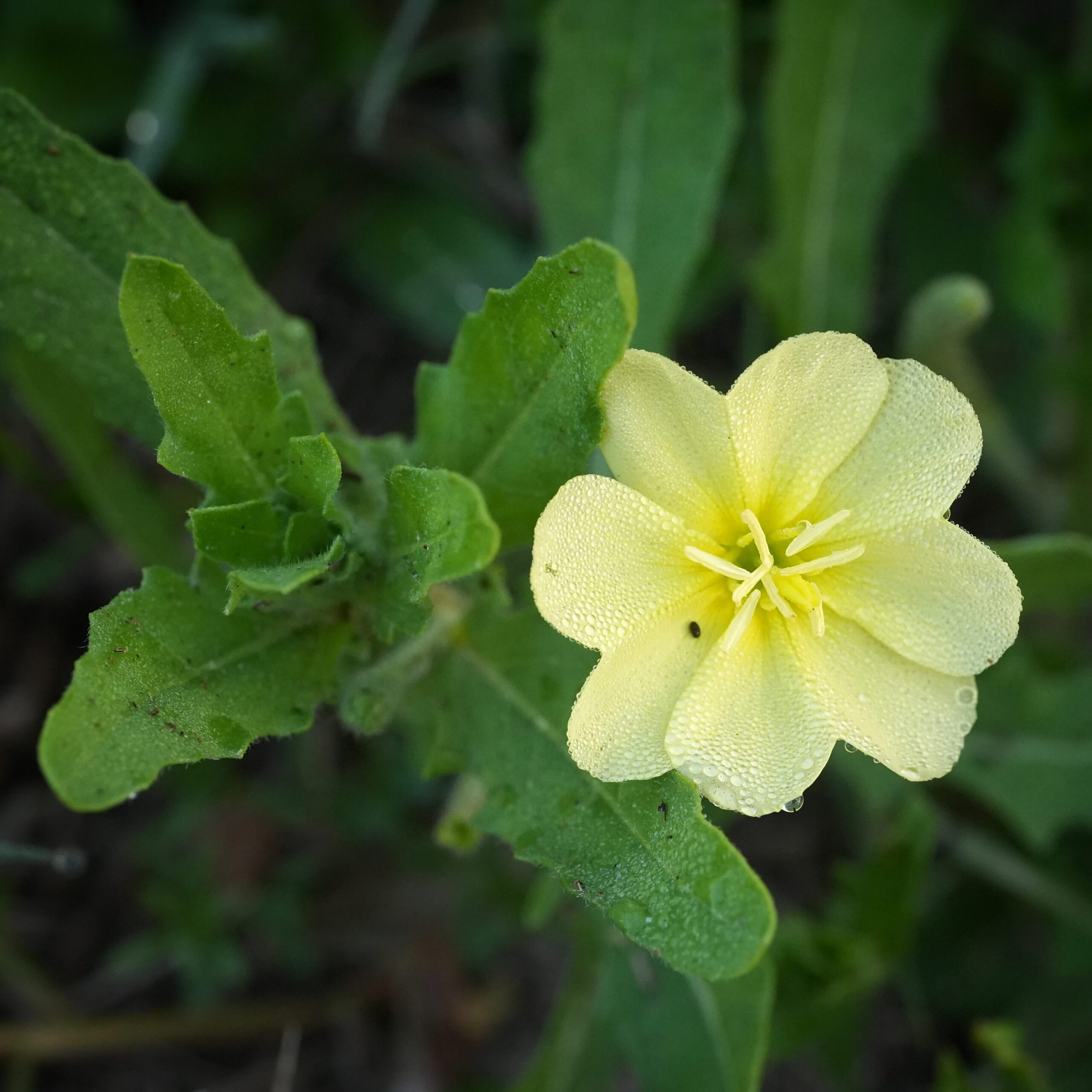
Cutleaf evening primrose
Oenothera laciniata
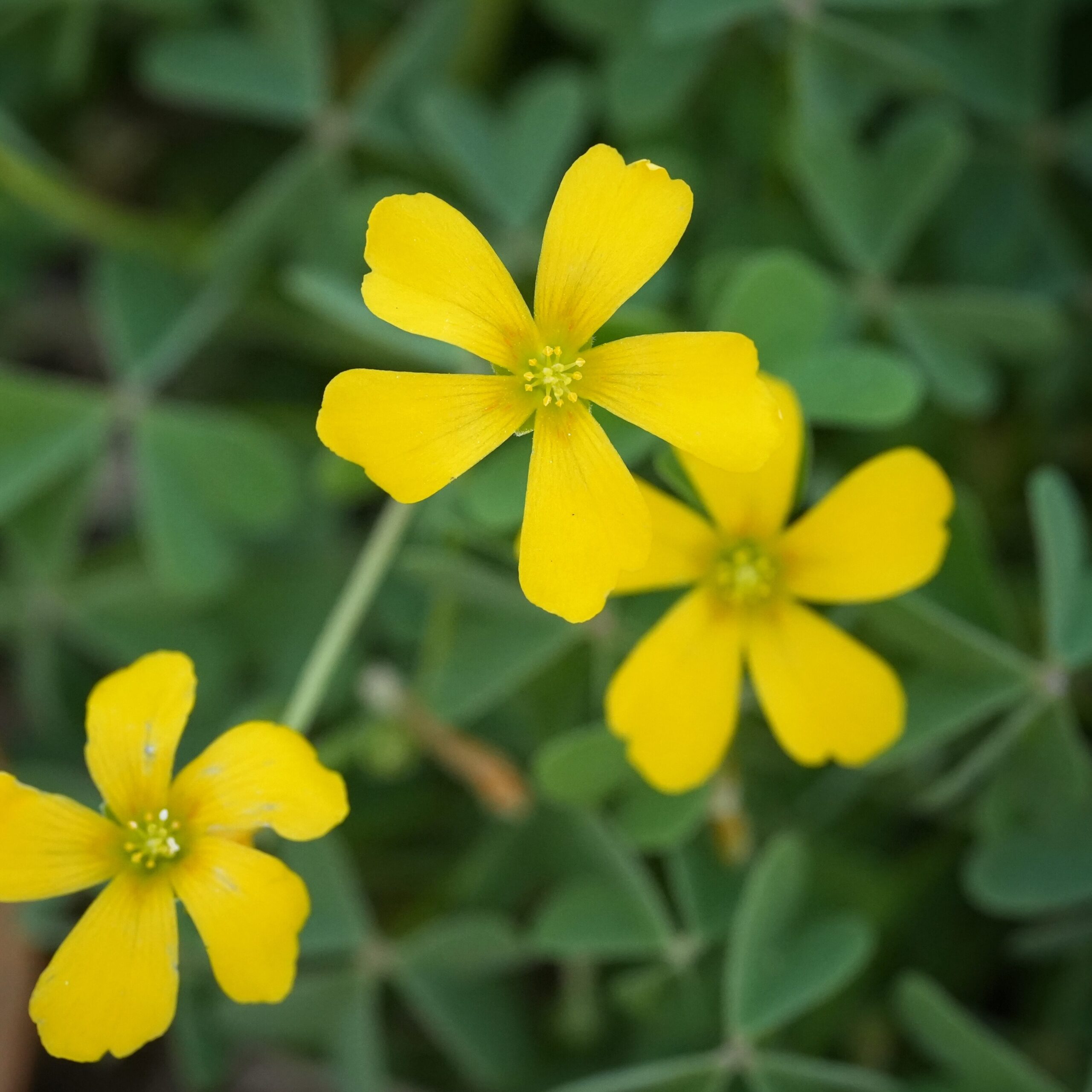
Creeping woodsorrel
Oxalis corniculata
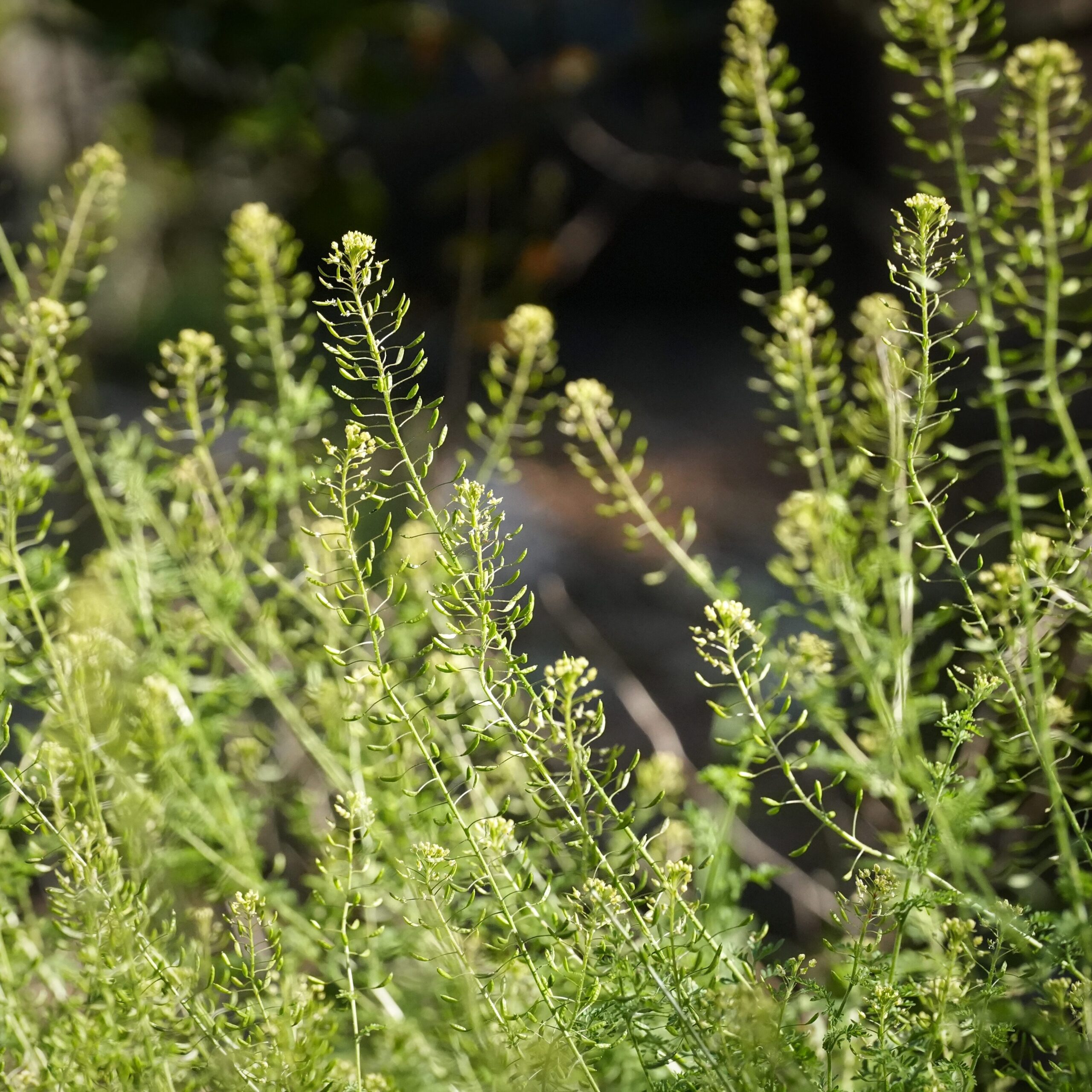
Virginia pepperweed
Lepidium virginicum
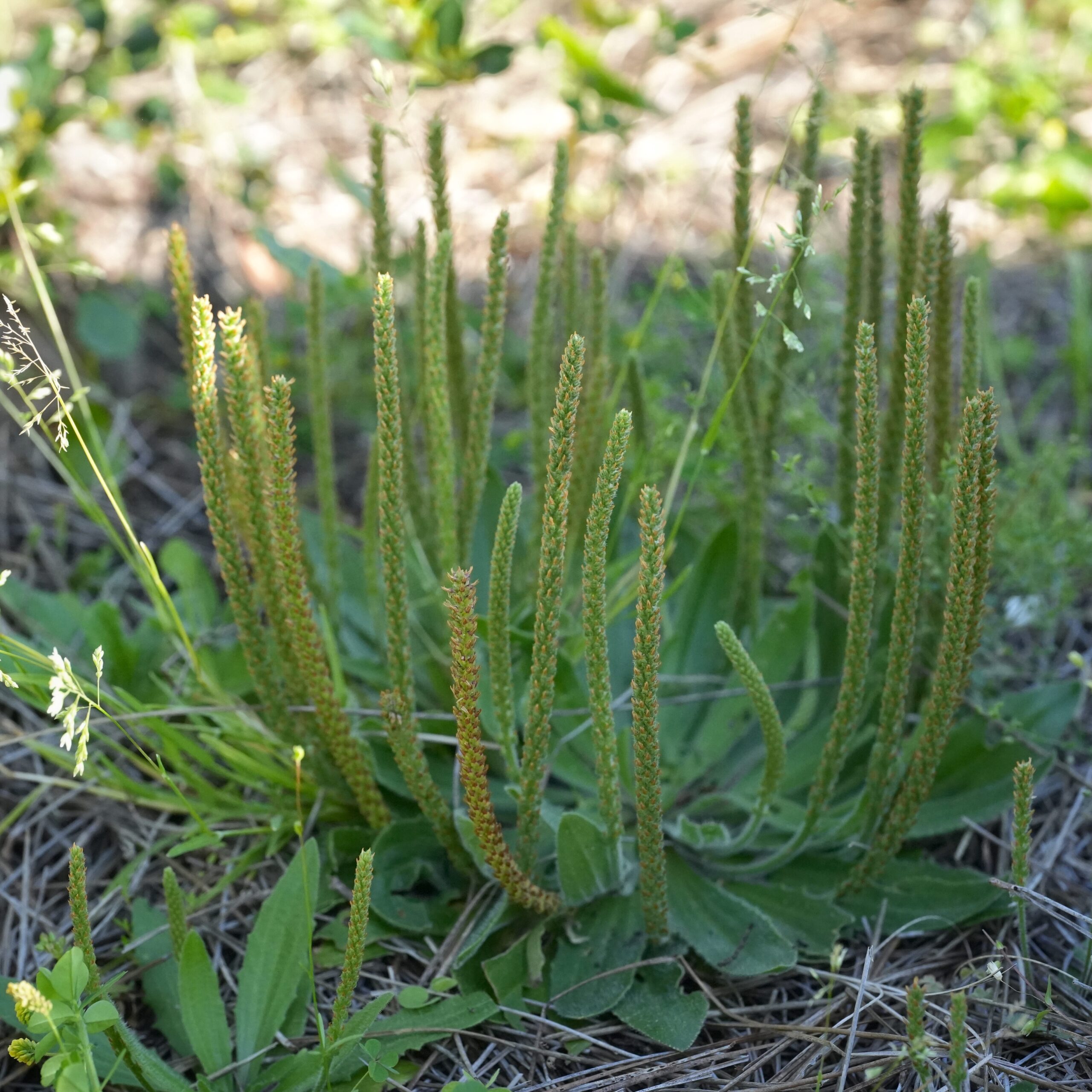
Virgina plantain
Plantago virginica
Learn more about spring’s beneficial native wildflowers in urban environments here.
Common NON-NATIVE spring wildflowers in urban areas
We encourage the removal of these non-native plants to make room for the native wildflowers that are best suited to supporting our native pollinators.
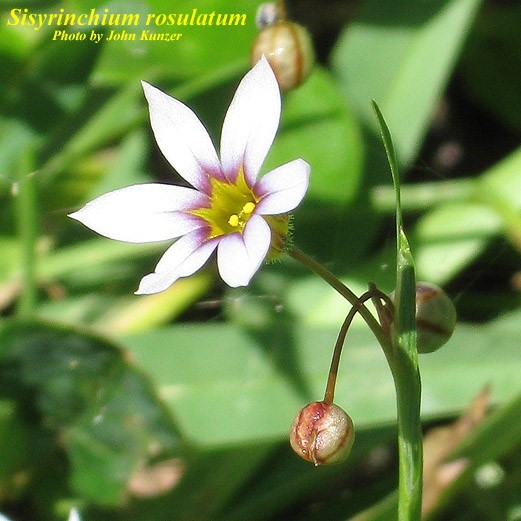
Annual blue-eyed grass, NON-NATIVE
Sisyrinchium rosulatum
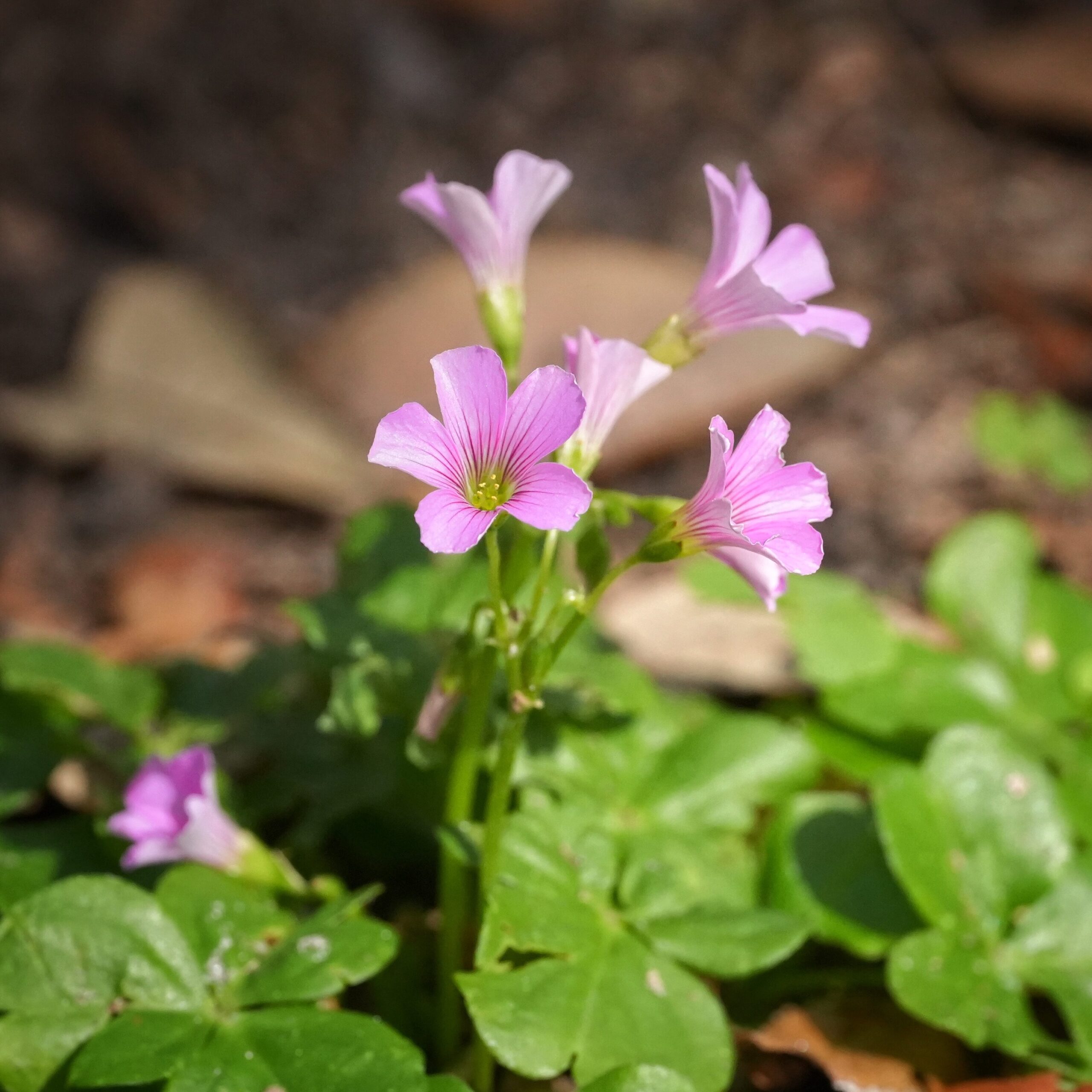
Pink woodsorrel, NON-NATIVE
Oxalis debilis
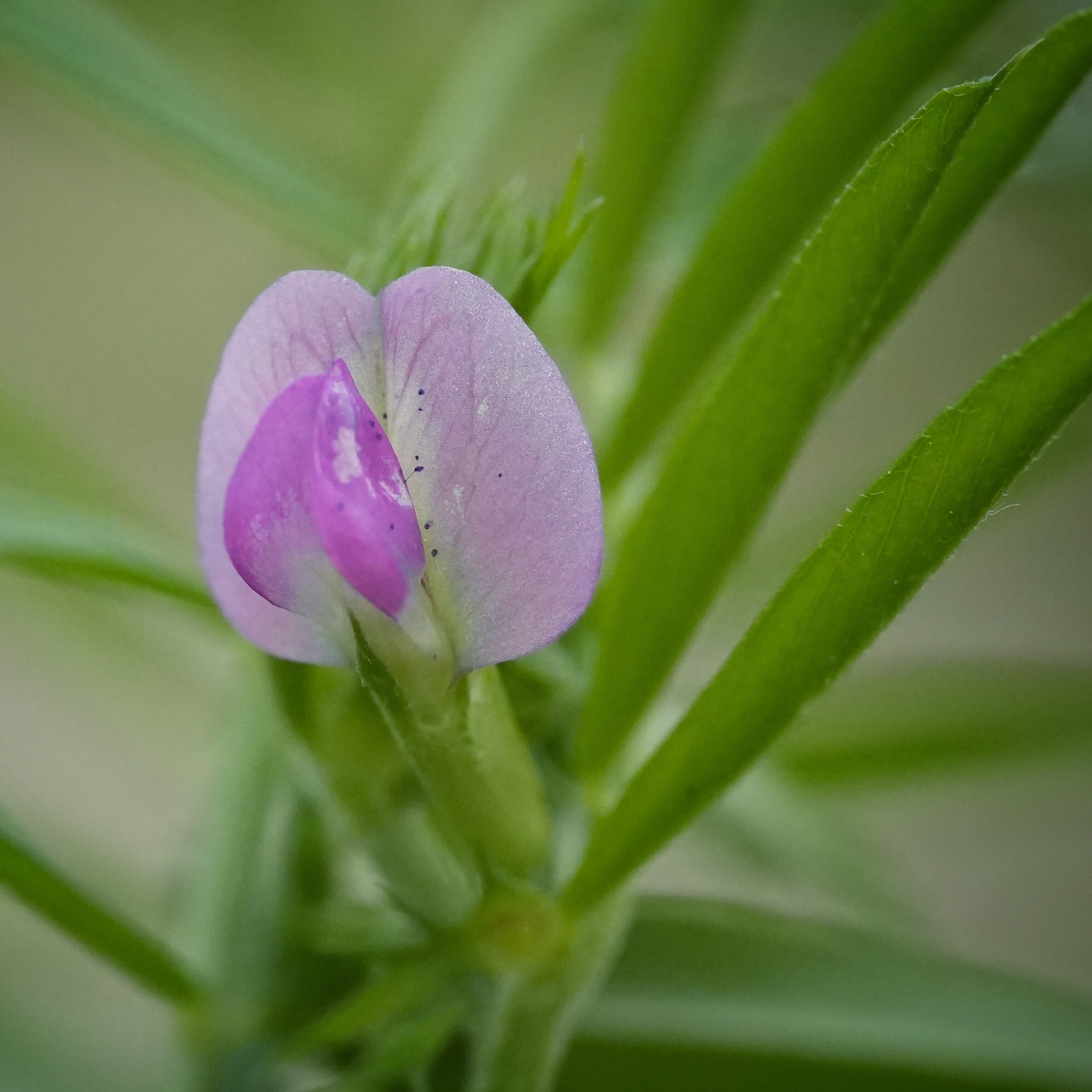
Common vetch, NON-NATIVE
Vicia sativa
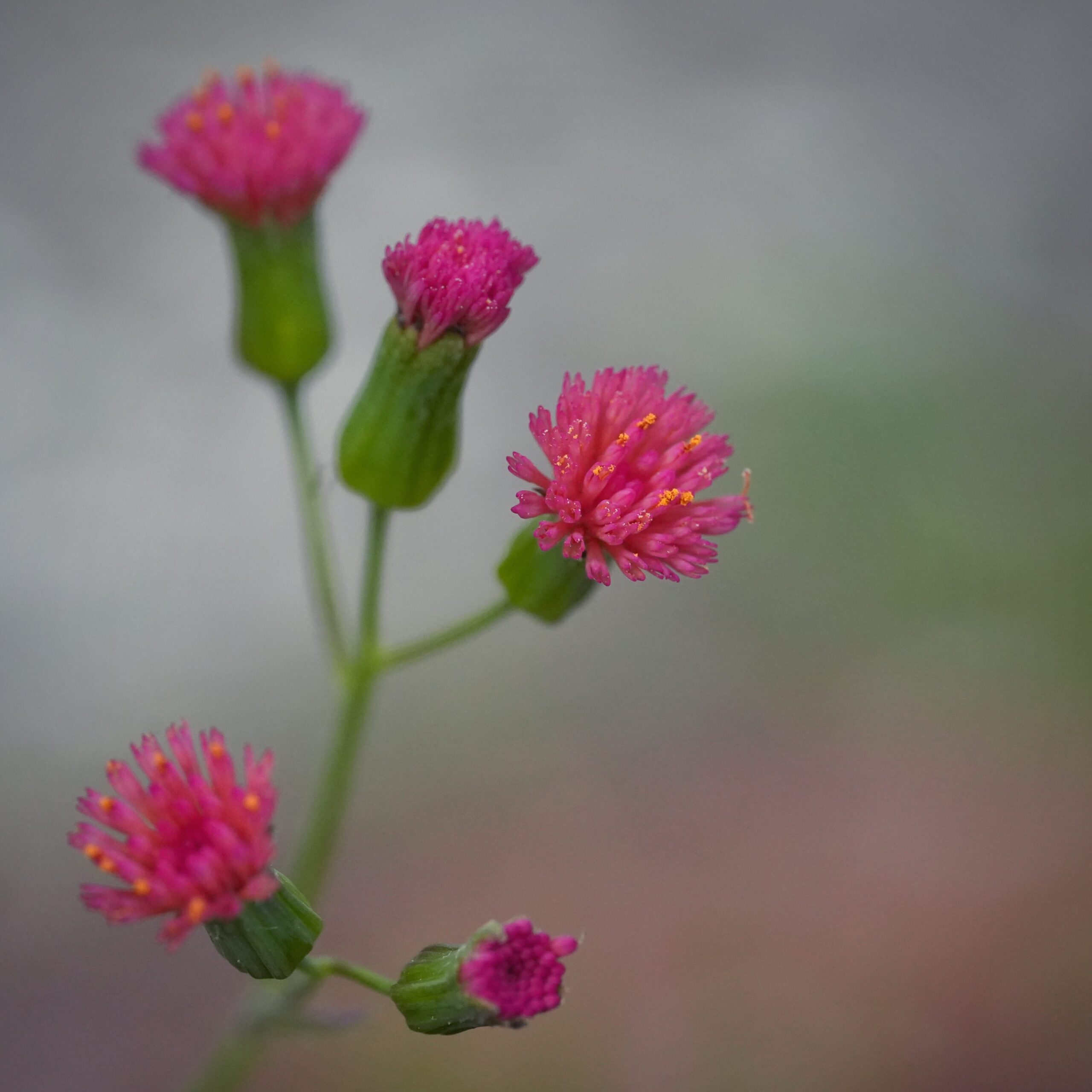
Florida tasselflower, NON-NATIVE
Emilia fosbergii
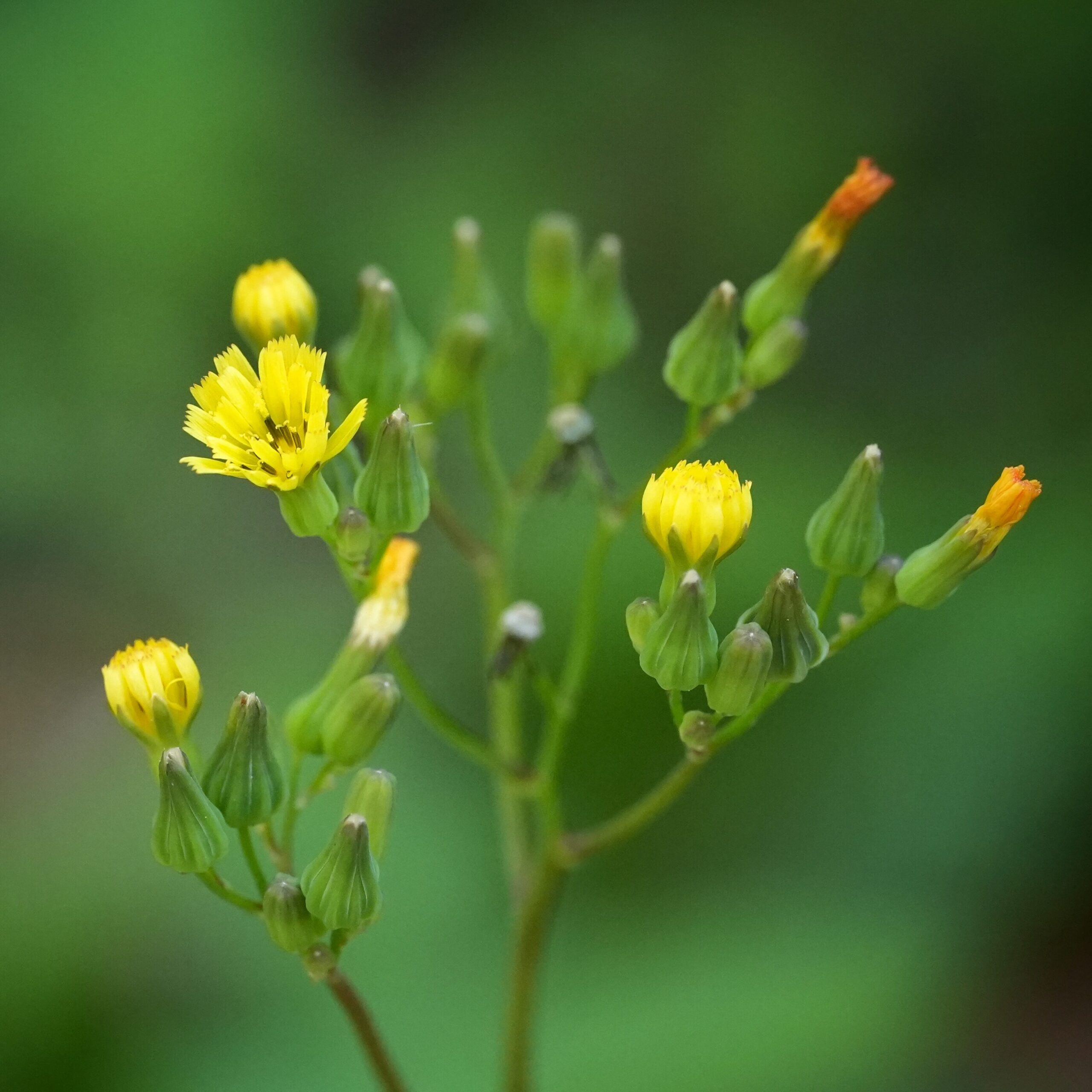
False hawksbeard, NON-NATIVE
Youngia japonica
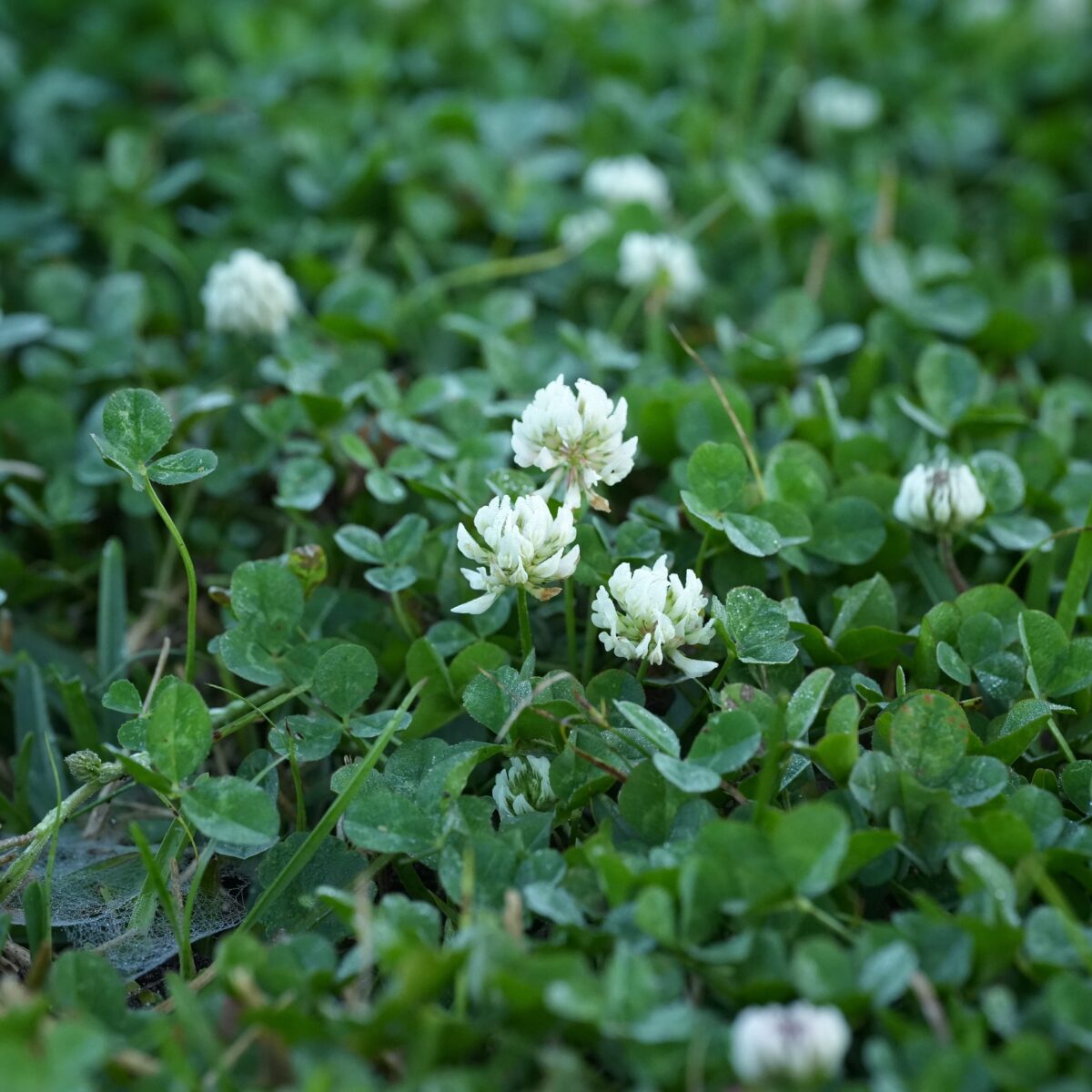
White clover, NON-NATIVE
Trifolium repens
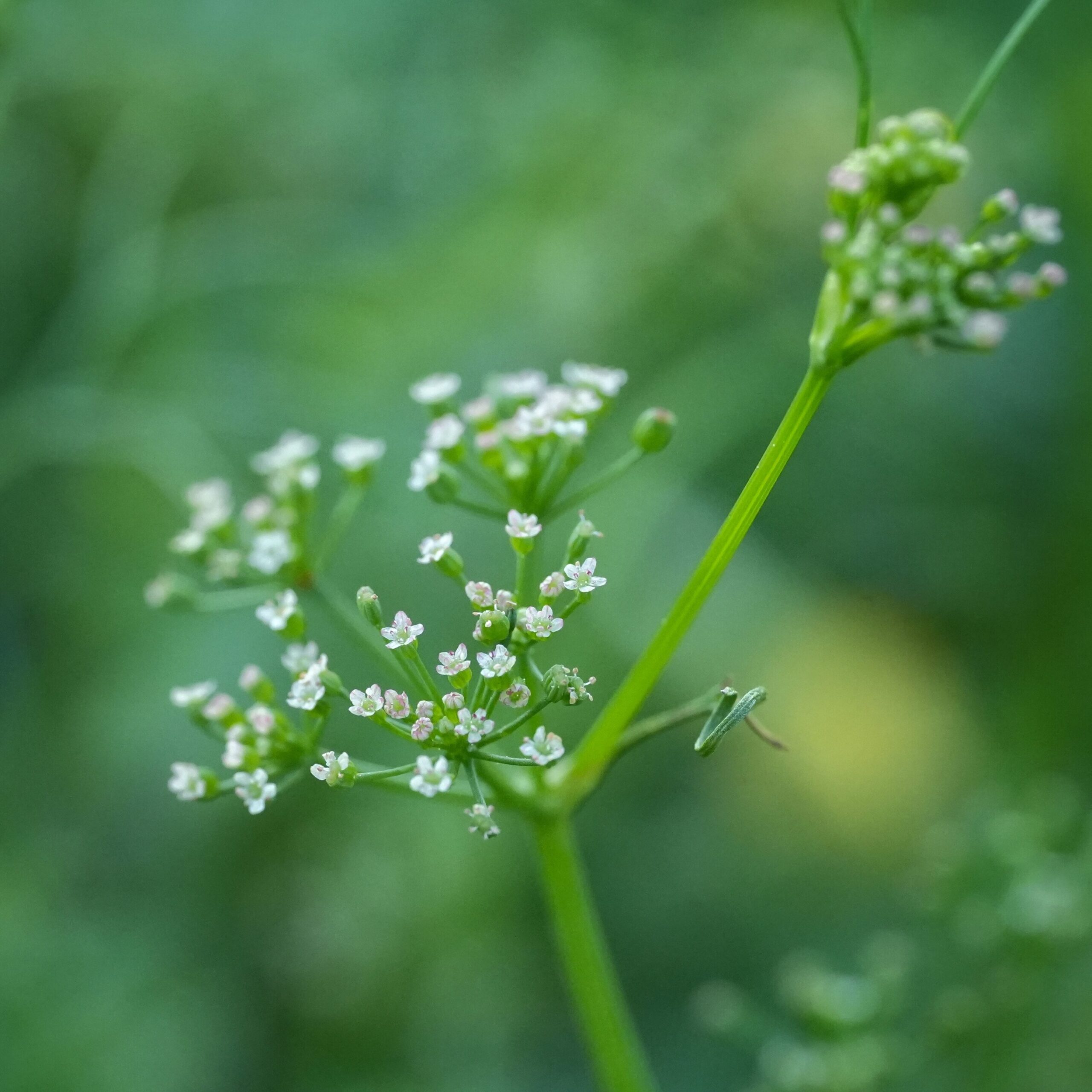
Marsh parsley, NON-NATIVE
Cyclospermum leptophyllum
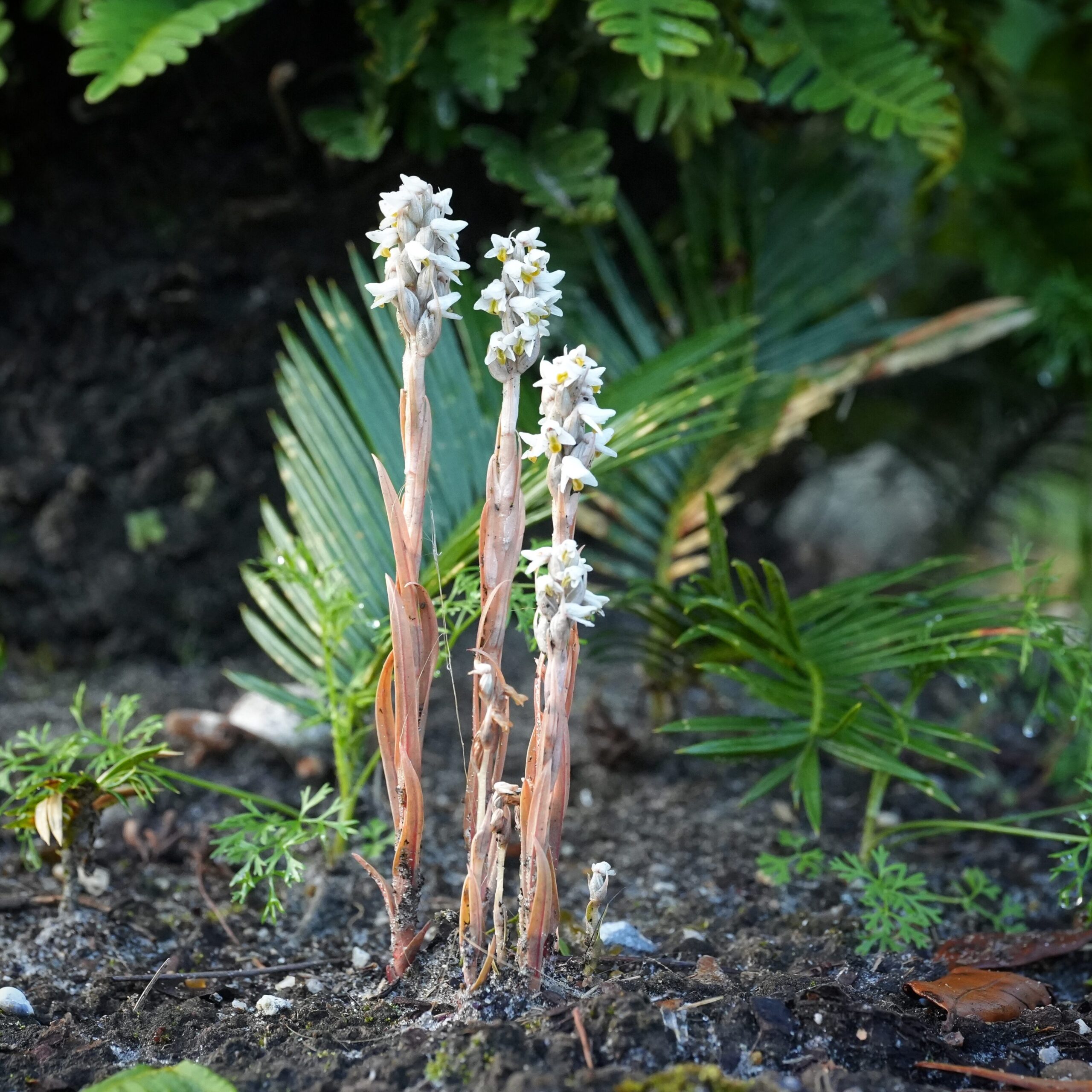
Soldier’s orchid, NON-NATIVE
Zeuxine strateumatica
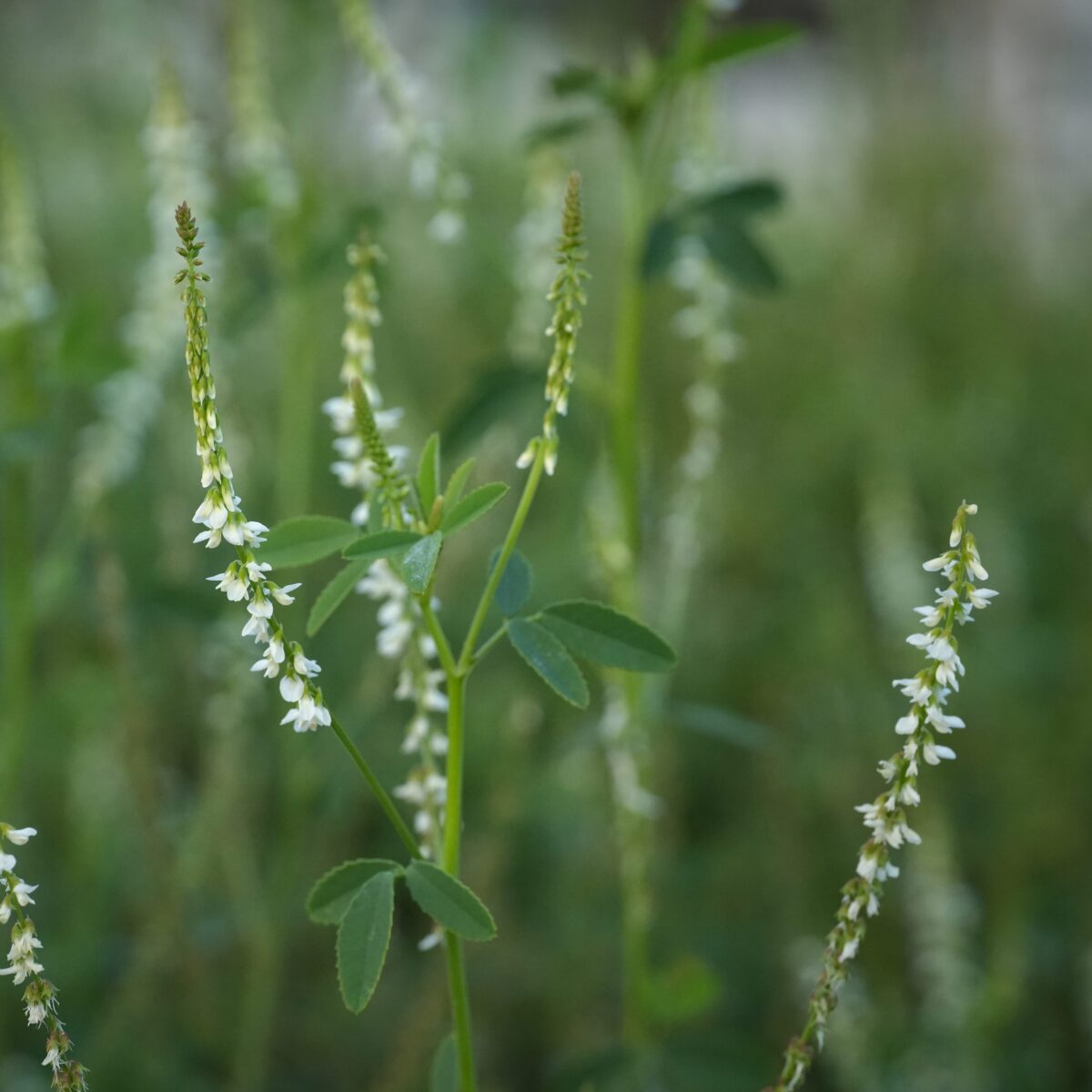
White sweetclover, NON-NATIVE
Melilotus albus

